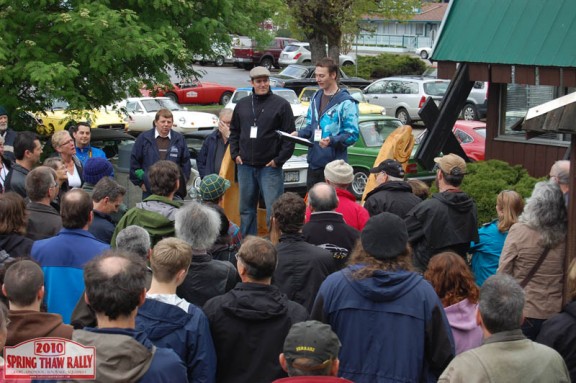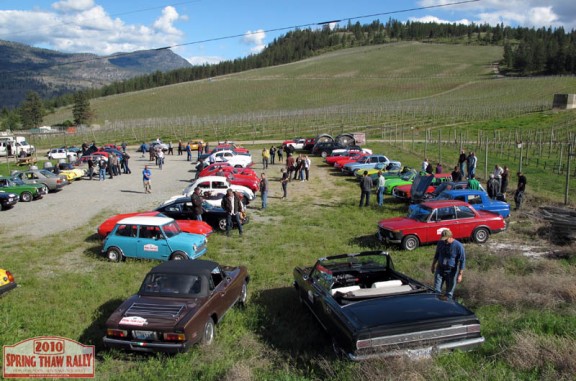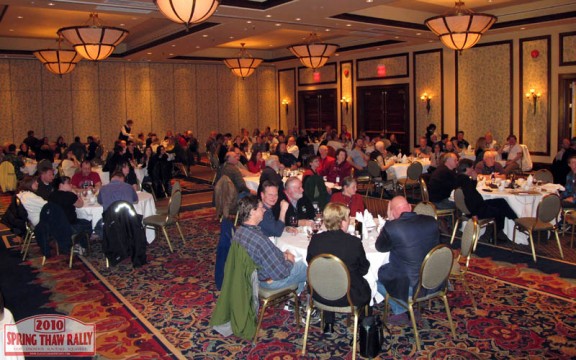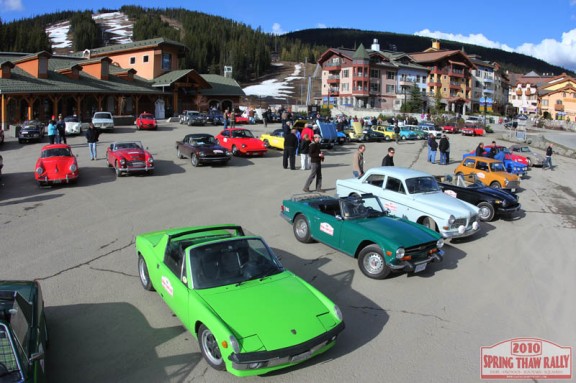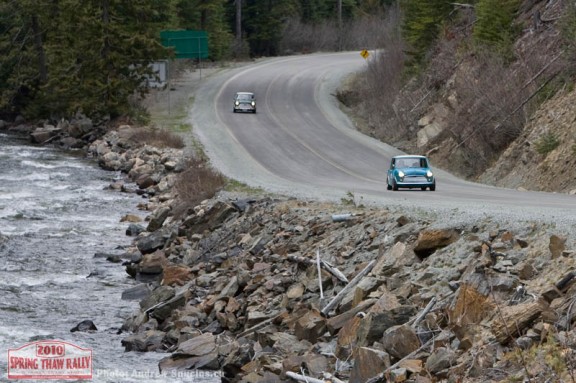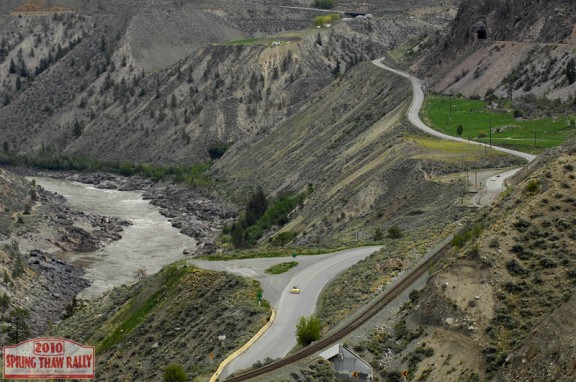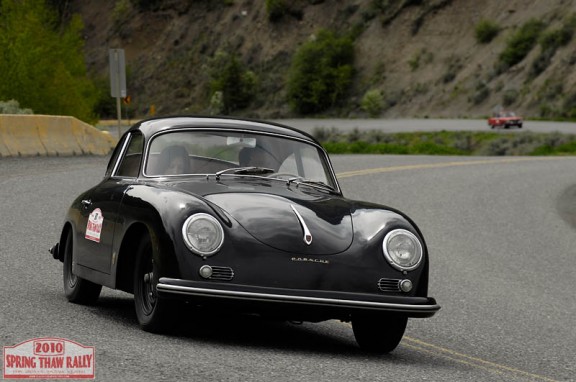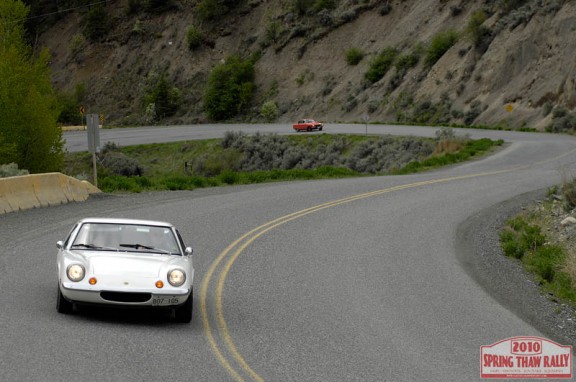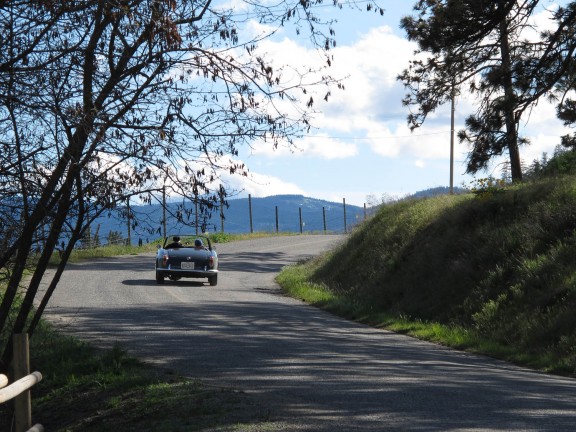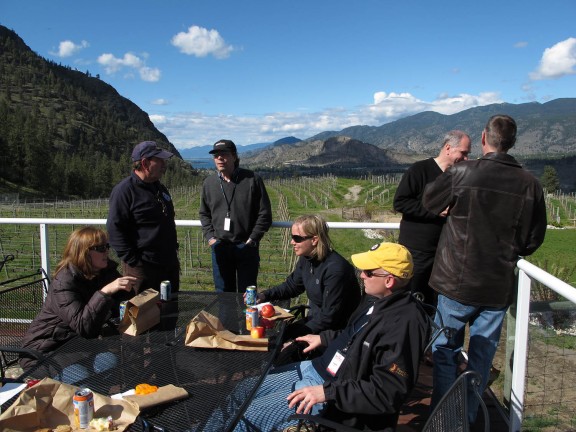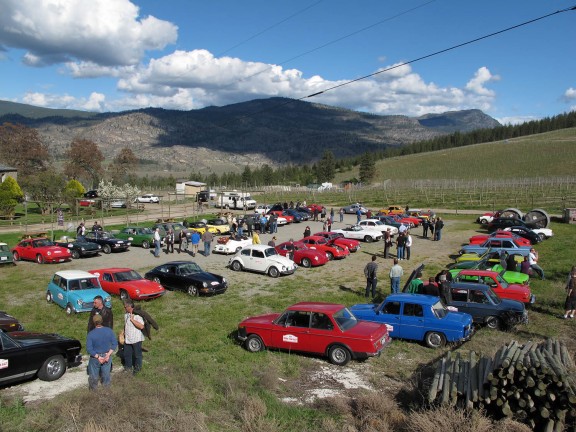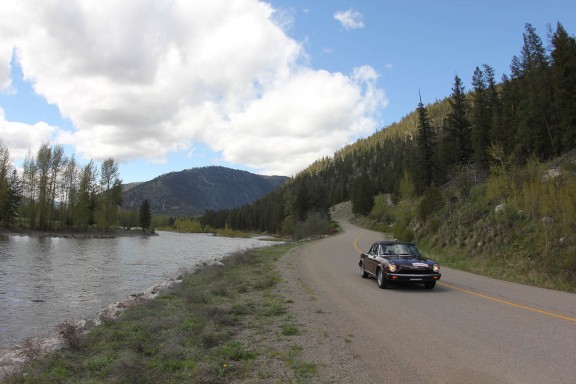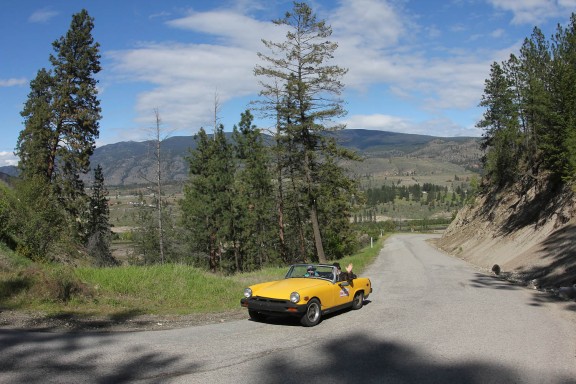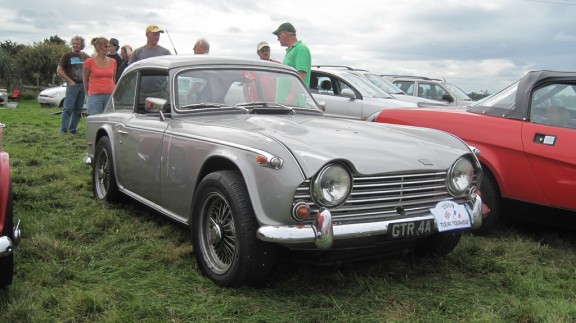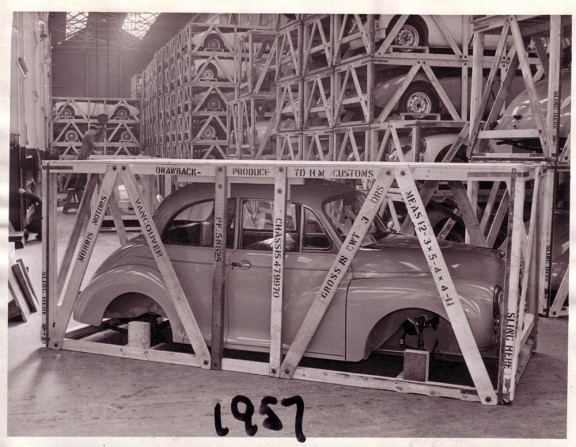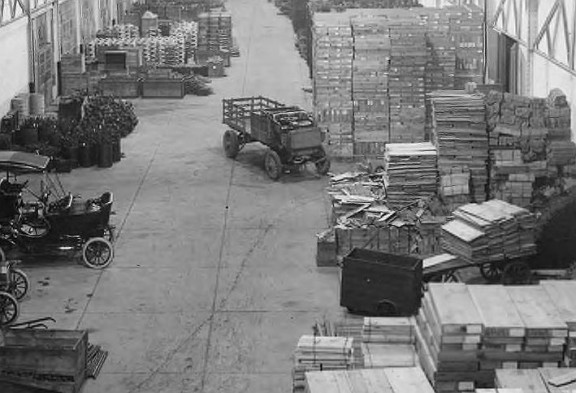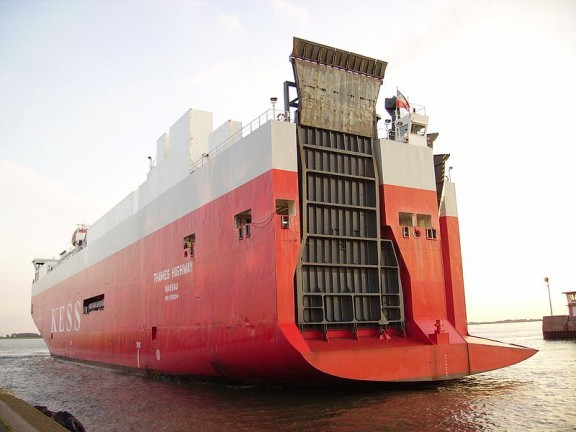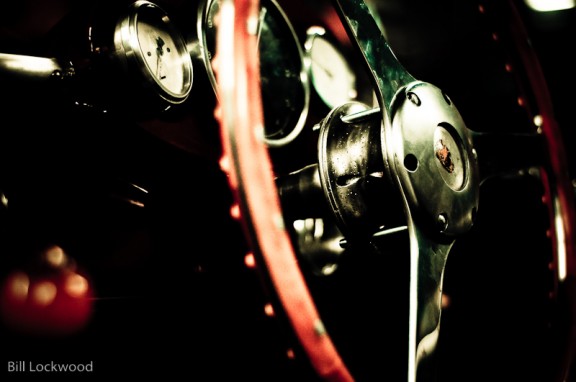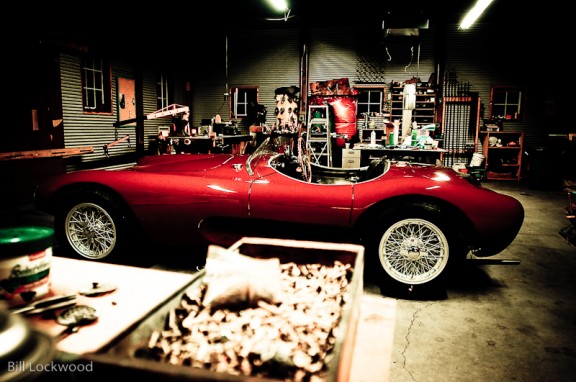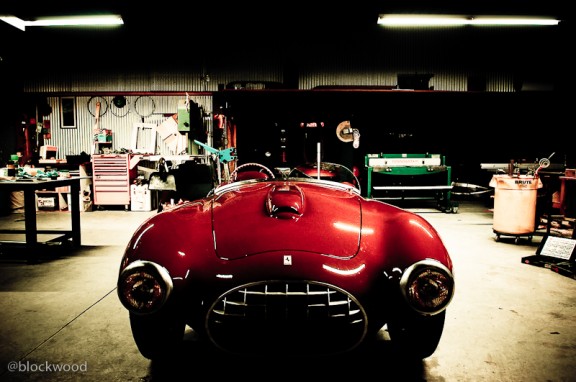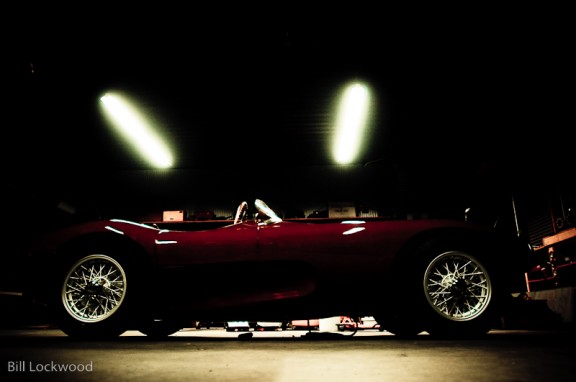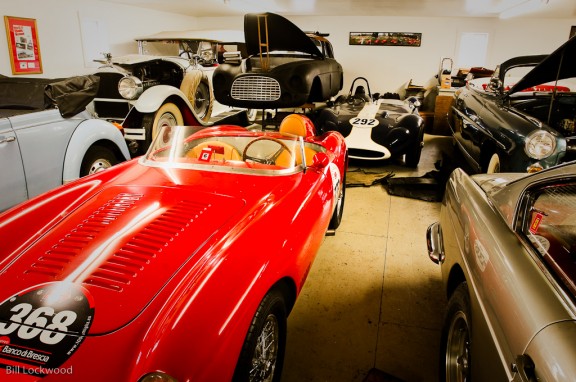By Warwick Patterson
Over the past few days I’ve been trying to write a concise wrap-up article about this year’s Spring Thaw Adventure, but it has been difficult for several reasons. First, as an organizer, the days of planning, preparing, and participating merge together into one blur and my experience becomes very different from a participant’s. That said, there are moments over the three days that stand out in my mind and make me realize why I love classic cars and why its important for people to get out and drive them.
When Dave and I decided to boost the numbers up to 60 cars from the 42 we had in 2009, we didn’t think much of it. It made for slightly more work in the hotel and restaurant department, but otherwise nothing really changed. We knew we were onto something special when the 2010 event sold out in the span of a week, but it was humbling to step up onto the bench in Hope, BC to address over 120 participants. This had become something much more than just going for a drive in the country with crazy friends!
The general public and governments dismiss ‘old’ cars as things that pollute our streets and should be scrapped to help stimulate a false economy. And yet, here was a group of people ready to strap in and drive the snot out of their ‘clunkers’ for the pure art and enjoyment of driving. I couldn’t keep the smile off my face as car after beautiful car rolled past to the start line and took off on their adventure. A big thanks to the town of Hope for the red carpet roll-out, especially Inge at the Visitor Centre, Victor of the Chamber of Commerce, and the Mayor, Laurie French.
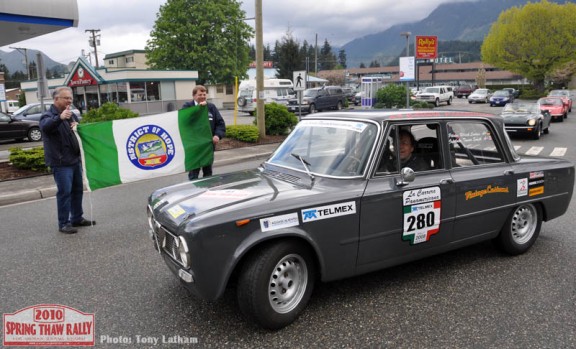
Hope Mayor, Laurie French, and Chamber President, Victor Smith, wave off the competitors at the start.
Sometimes our event plans are tested in advance and we know they will work. Other ideas look good on paper and we have to leave it in the hands of Mother Nature and the local hosts to make it a success. Such was the case with our Friday lunch stop at See Ya Later Ranch winery. On the pre-runs it seemed to be a nice venue, the manager owned a Sunbeam Alpine, and they were keen to host our group. “Make it so!” we said, and a couple weeks later, sixty cars rolled into the vineyard. The sun came out, a bag lunch was provided, and it couldn’t have been more perfect! From my perspective, hurdle number one had been surpassed but there was still two days to go. During the event, I live in perpetual fear of finding out I’ve confused my rights and lefts when composing the routebook!
One of the highlights of the weekend for me was at the first photo location on Saturday, at a small one-lane bridge leading to Black Sage Road in the heart of wine country. The first car to appear was the 1953 Aston Martin DB2 followed closely by the ex-Carrera Panamericana Alfa Giulia TI. After crossing the bridge they both accelerated in unison up the hill and across the ridge, sending their refined roar across the valley. I felt a twinge of pride, knowing that Dave and I helped bring these two cars together on that road to be enjoyed as they were meant to be – at full song on a twisty ribbon of tarmac.
One of the more common stories Dave and I heard over the weekend, is how the Spring Thaw created a hard deadline for a project. An engine rebuild or restoration that perhaps would drag on all summer, suddently gets an injection of urgency. There were many cars in pieces just months and weeks – and, indeed, days – before the event. Our Spirit of the Thaw award went to Duncan and Kirk Cowen in their V6-swapped MGA. Duncan was still trying to get the motor to fit in January and at 12:05am the day of the Spring Thaw the car roared to life for the first time and they hit the road. Better yet, they ran with the top down through sun, rain, hail, and snow the whole weekend. I’m not even sure the car had a top! These are the sorts of insane people the ‘Thaw was intended for.
For the second year in a row, the entourage spent Saturday night at Sun Peaks Resort north of Kamloops. With ski season over, most of the restaurants and shops are closed, so finding somewhere to feed 130 people can be a challenge. The Delta Hotel said they could fit that many people, so we arranged for a meal there. It was only when I walked in the doors that I realized we were going to be in the ballroom! This was not right…first a winery stop and now a ballroom dinner? There goes our grassroots low-budget credibility!
To cap off the weekend of adventure, the cars headed over the Duffy Lake Road from Lillooet into Pemberton and finished in Squamish, BC. The Duffy is an amazing stretch of road, often used in car commercials, and takes you from dry, arid desert terrain over the mountains and back into the coastal rainforest. This time, Mother Nature gave us warning that perhaps our time was coming to an end, and she started throwing a few snow flakes into the mix at the top of the pass.
One of those moments that made me smile and remember why we do this event came on our run through the pass in the little Mini. It was like we were transported back in time and suddenly had been dropped into a European mountain range. As I vigorously stirred the 4-pot to stay in the power band and pitched the little Mini into the corners to keep up, ahead of us romped a Renault Gordini, an Alfa Sprint Veloce, and a gorgeous Alfa Giulia SS. As Dave Birchall said, “Who needs Mille Miglia!”
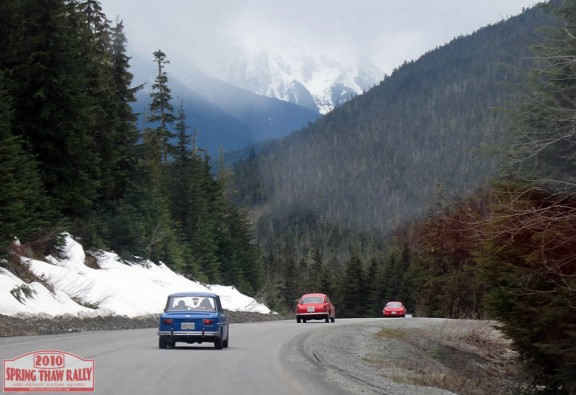
Like we've been transported back to Europe 1966. Gordini, Sprint Veloce, Giulia SS on the Duffy Lake Rd.
And so it was with cooked brakes and tired bodies we arrived in downtown Squamish for the finish. Even through the bitter wind and rain, everyone seemed to have a weary smile on their face. In a cruel twist of fate, the other half of the organizing duo arrived in the back of the Sweep truck. Dave’s motor had made an awful knock-knock-knock sound while leaving Sun Peaks in the morning and the the oil pressure light came on. At the final awards, Dave found himself accepting the The Hard Luck trophy that he had just built days before! Another really fun trip with like-minded crazy car nuts was in the books. New friends, new cars to lust after, and best of all, we don’t have to start thinking about the next one for at least a couple more weeks!
Thanks to all our supporters and sponsors – Hagerty Collector Car Insurance, AVR Import Specialties, Dave Koszegi Realty, BringaTrailer.com, Classic Motorsports, Permatex, Lordco Auto Parts, Northwest Auto Salon, and the West Coast Rally Association for helping us put on the event. Most of all, a huge thank you to all the participants who came out with their fantastic cars. The people are what make this event so fun.


